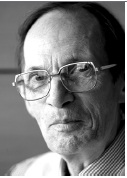How are things with you? Over here in Roppongi 1-chome, I must report, life is pretty quiet.
The newspapers say that an al-Qaida network of sorts has lately been unearthed by the authorities in Japan, but the chances of terrorists blasting us out of our tranquil existence in this part of town strike me as pretty small — even if there are police on duty in the streets, stopping the cars in the road leading past us to the residence of Mr. Howard Baker, the U.S. Ambassador.
Did I speak too soon? Dunno. It’s true that we have never seen security like this — going on under our noses in our part of Tokyo. Or not in the quarter of a century that I and my family have lived here. But the cops on duty, poor fellows, look terribly, terribly bored to me.
What on earth have they ever found to report to their superiors of late? Their duty reports must be empty and tedious documents, page after page, week after week, with nary an arrest to record.
Who wants to be a cop? Imagine doing their jobs, just standing there with a big staff in your hand, hour after hour, stopping an occasional car and asking the driver to open up his trunk and then finding nothing.
I am told many of these cops come from out of town, so the reward for them is the thrill of being selected from among their peers and then honored with a special mission in Tokyo. However, once they arrive up here, it’s boredomsville all the way, no?
That said, when something happens in these parts, the locals sit up and pay attention. It can be a small thing such as a McDonald’s, suddenly arriving on our doorsteps.
Go to Kamiyacho Station. Head out from there, on up the hill towards the Okura and, sure enough, there be the Golden Arches. That makes a splash in a quiet neighborhood.
What else is new in these parts — in this strategic section of Tokyo that includes Akasaka, Roppongi and Toranomon? I guess the biggest development for me has been this — the sudden blossoming forth of a familiar, pale blue, oval corporate logo. Have you got it? Yes, I refer to Samsung of Seoul.
For years, for as long as I can remember, certainly going back to the ’60s, there was next to no Samsung visibility here. Chairman Lee Kun Hee, a friend from the ’70s, used to fly in here, stay at the Okura and play a bit of golf.
Quietly he was making a start. He went to school here — Waseda — and is fluent in Japanese. Following in the steps of his flinty dad, Lee Byung Chul, the founder of Samsung, he made a thing of getting close to Japan.
He followed the rise of consumer electronics here and duly noted Japan is home to half a dozen of the most formidable such firms in the world: Sharp, Sony, Toshiba, Fujitsu, Matsushita … Shall I go on? And duly decided to join the party.
What that meant, 20 years ago, was opening a discreet office in the Kasumigaseki Building near Toranomon, to track Japanese technology. The first Mr. Lee devised this strategy after World War II, and his third son, Lee Kun Hee, followed through.
His people brought Japanese technicians over to Korea and let them work on the new Samsung production lines, to teach everything they knew in light electronics.
Thus — and I simplify — was born the “Sony of Korea.” It’s growing as I speak. Eighteen months ago, Samsung’s market cap was half that of Sony. Now it is twice as large.
Right in line with this burgeoning forth on the world stage, Samsung has embarked on nothing less than a local branding campaign right here in our neigborhood.
Take a look at the new building with their logo on it in Roppongi 1-chome, just across from the Tomin Bank. Check out the banners on Roppongi-Dori. Or take a look at the posters in the subway at Roppongi — there’s the blue logo.
Right now components account for 80 percent of Samsung shipments into this country. The hot item is their PDR the 40-inch or more giant wafer-thin “panels” for TVs.
This is, I should add, a hotly competitive field. Fujitsu and Samsung were involved in an escalating patent war over PDP technology. The two recently agreed to drop lawsuits against each other. But in the future, S will mainly ship whole products, no doubt.
Why did S wait so long to bode forth in Japan? My guess is that Samsung has quite simply reached a point of maturity where it is ready to take on the Japanese titans in consumer electronics on their own turf. But let me ask the old friend who knows, Lee Kun Hee.









